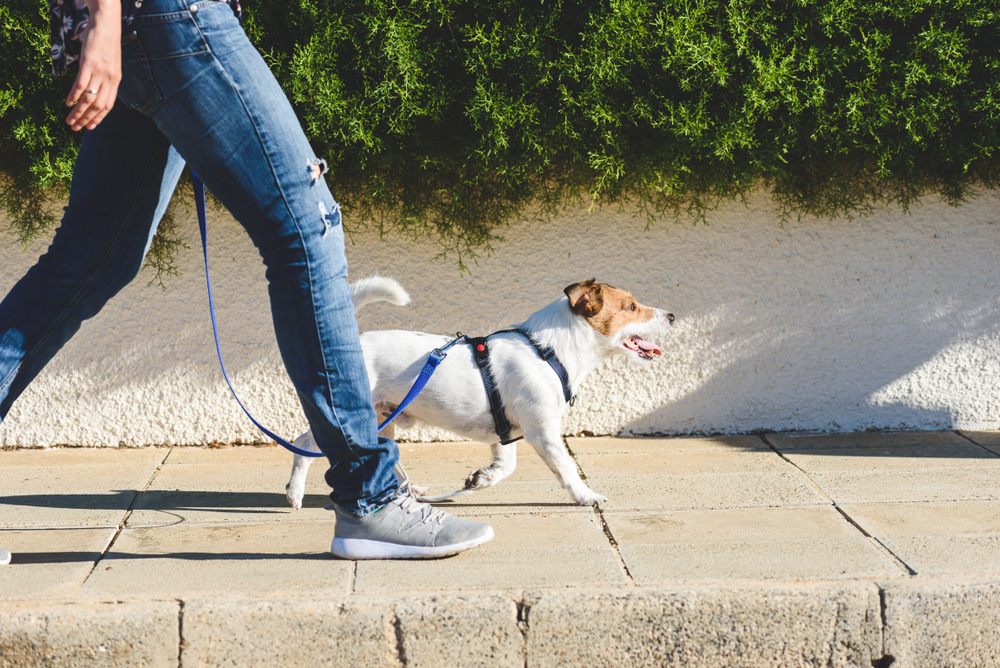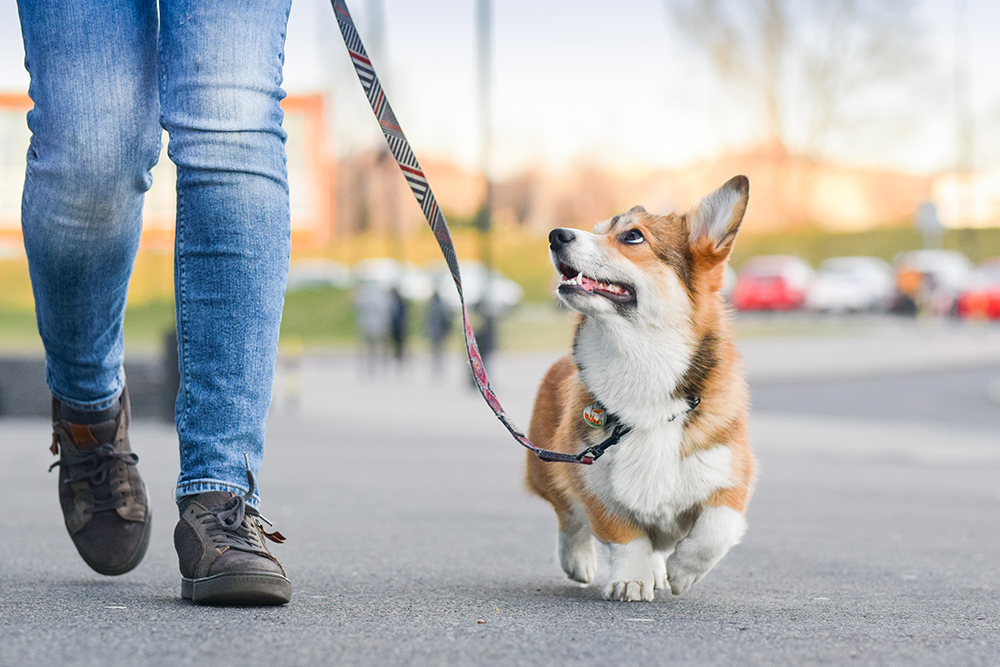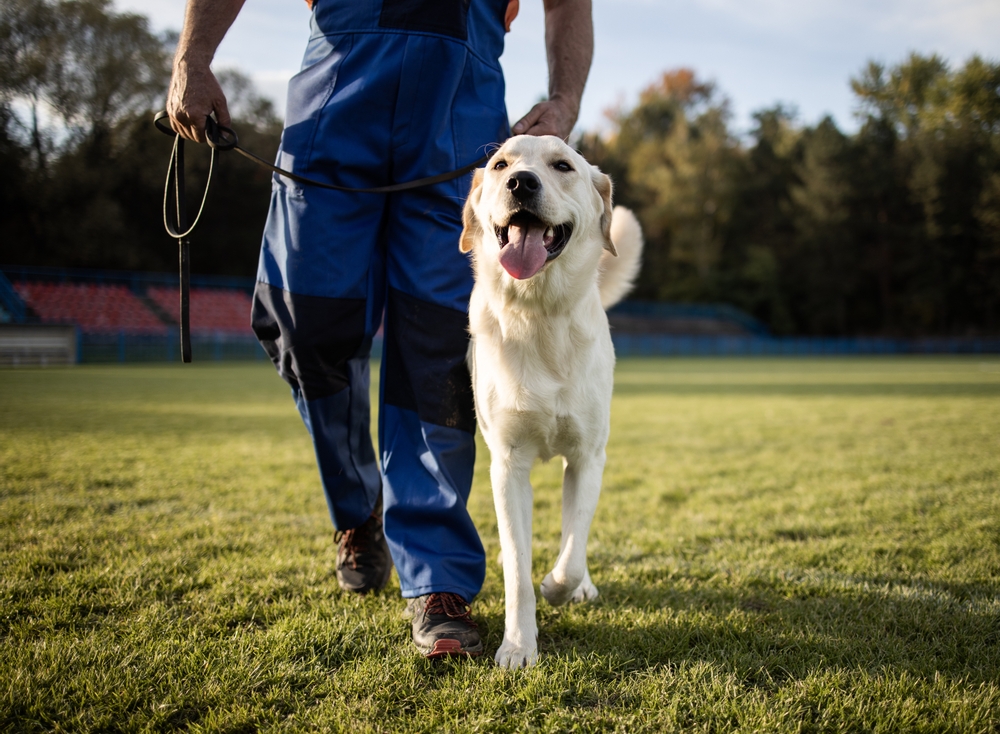Click to Skip Ahead
Note: This article’s statistics come from third-party sources and do not represent the opinions of this website.
Dogs are best friends, companions, and, for some owners, exercise buddies. While companionship remains the most common reason to buy or adopt a dog, enhanced exercise is still a popular reason.
Walking not only benefits owners, but it is also an essential part of dogs’ lives. It offers socialisation and training opportunities, as well as enrichment and physical exercise. As such, it is recommended that dogs get at least one and ideally two walks a day, lasting anywhere from 30 minutes to 2 hours depending on the breed, age, and physical health of the dog in question.
Some dogs are unable to be walked because of ill health or injuries, and some owners can struggle to get out and walk their dogs, so, while the average dog in the UK gets walked 6 times a week, approximately 1 in 20 owners don’t walk their dogs at all.
Below are statistics related to UK dogs and the walks they receive, including data on the use of professional dog walkers, where available.

The 14 Dog Walking Statistics
- There are more than 13 million pet dogs in the UK.
- Around 33% of UK households own at least one dog.
- Approximately 48% of dog owners adopted dogs to get more exercise.
- 70% of prospective dog owners are looking to get dogs to help them get more exercise.
- Brits walk their dogs, on average, 6 times a week.
- 75% of Brit owners say they walk more now they own a dog than before.
- The average UK dog walk lasts 48 minutes.
- 5% of owners jog with their dogs while 2% cycle with them.
- 98% of dog walkers do so because they believe it improves the dog’s quality of life.
- The Kennel Club recommends dogs be walked at least once per day.
- Dogs who get little exercise are six times more likely to develop dementia.
- 1 in 20 UK dog owners never walk their dogs.
- Approximately 1 in 40 owners use professional dog walking services.
- Professional dog walkers in London earn an average of more than £12 an hour.

UK Dog Ownership Statistics
1. There are more than 13 million pet dogs in the UK.
(UKPetFood)
Dogs remain the most popular pet species in the UK with a population of 13.5 million pooches living in our homes. This means there are a million more dogs than there are cats.
The population of dogs is considerably higher than that of birds, rabbits, tortoises, and turtles, which are the next most popular pet species of which there are 2.8 million, 1 million, and 700,000 respectively.
2. Around 33% of UK households own at least one dog.
(UKPetFood)
Approximately one-third of households in the UK own at least one dog. Again, this figure is higher than cats—36% of households have dogs compared to 29% that keep cats. Indoor birds are kept by 3% of households.
3. Approximately 48% of dog owners adopted dogs to get more exercise.
(NCBI)
Companionship is the most common reason pet owners buy dogs with 80% of current owners citing this as their main motivation for getting a dog in the first place. Just under half, or 48.2% of current owners said that they got dogs because it would help them get more exercise.
Other common motivators for getting a new dog include the loss of a previous dog and companionship for other dogs within the household.

4. 70% of prospective dog owners are looking to get dogs to help them get more exercise.
(NCBI)
Similarly, exercise is a common reason for people to consider getting new pets. When asked, 70% of prospective pet owners said they were considering getting a dog because it would motivate them to exercise.
Companionship is still the most common motivator for prospective owners, as it is for current owners, with around 88% of potential owners saying they were considering getting a pet to keep them company.
Dog Walking Statistics
5. Brits walk their dogs, on average, 6 times a week.
(Ordnance Survey)
It is generally recommended that dogs be walked at least once a day. Walking helps ensure that the dog gets physical exercise. It also offers mental stimulation, and socialisation, and can help combat stress, anxiety, and depression.
According to one survey, UK dog owners walk their dogs, on average 6 times a week with 40% walking at least seven times a week.
6. 75% of Brit owners say they walk more now they own a dog than before.
(Ordnance Survey)
Exercise is one of the key motivators for buying or adopting dogs, and according to surveys it works. Three-quarters of owners said, when surveyed, that they get more exercise now they own dogs than they ever did before owning them.
Increased exercise offers similar benefits to people as it does to dogs. It can reduce the likelihood of heart problems and other major health concerns and lift the mood.

7. The average UK dog walk lasts 48 minutes.
(Ordnance Survey)
The ideal amount of walking depends on a dog’s breed, age, physical health, and other activity levels with most dogs needing at least 30 to 60 minutes of exercise per day, and some breeds needing double that.
The average dog walk in the UK lasts 48 minutes which means the average dog owner walks their dog an impressive 750 miles per year.
8. 5% of owners jog with their dogs while 2% cycle with them.
(BMC Public Health)
Walking is good exercise, but some energetic breeds need more intense forms of exercise. Jogging with a dog is possible, although it does take some extra leash training to prevent accidents and injuries, and 5% of owners said they jog with their dogs.
Cycling with dogs means they get to pick up speed and burn off energy, but it can be a challenge to cycle safely. Despite the potential difficulties, 2% of walkers said they regularly cycle with their pets.
9. 98% of dog walkers do so because they believe it improves the dog’s quality of life.
(BMC Public Health)
Dogs need exercise to stay fit and healthy. It also helps maintain good mental health and it allows for socialisation with other dogs and people. It is an important consideration when taking on a new dog.
When questioned, 98% of UK dog walkers say they take their dogs out because they believe it improves the dog’s quality of life.
10. The Kennel Club recommends dogs be walked at least once per day.
(The Kennel Club)
Ideal walk length and frequency depend on the dog’s physical condition, age, and health, as well as breed and other activity levels. If your dog takes part in flyball three times a week, it shouldn’t need as many daily walks.
The Kennel Club recommends that owners walk their dogs at least once per day, although many owners find it more beneficial to break down daily walks and offer one in the morning and one in the evening.

11. Dogs who get little exercise are six times more likely to develop dementia.
(Independent)
Canine Cognitive Dysfunction, also known as CCD or dementia, is quite common in dogs as they grow older. It can be managed but only if it is caught early and it can lead to disorientation, mood changes, lethargy, toileting problems, and even reactiveness.
One contributing factor to CCD is a lack of exercise with dogs that get very little exercise being six times more likely to develop the condition when they age.

Professional Dog Walking Statistics
12. 1 in 20 UK dog owners never walk their dogs.
(Ordnance Survey)
Unless there is a physical reason not to, regular walking is essential to maintain a dog’s physical and mental health. It is also important for social development. It can help reduce the likelihood of developing conditions like CCD, too.
However, dogs with arthritis or other joint problems can struggle for mobility, making regular walks difficult. Partially as a result of conditions like this, 5% of UK dog owners never walk their dogs.
13. Approximately 1 in 40 owners use professional dog walking services.
(The Company Warehouse)
Professional dog walking services are ideal for owners with poor mobility, who are out at work all day, or who need a hand providing regular exercise to their dogs. The professional dog walking industry is booming in the UK, which means dog owners have a good selection to choose from with owners in most areas given a choice of services.
Approximately 2.5% of owners regularly use a professional dog walking service.

14. Professional dog walkers in London earn an average of more than £12 an hour.
(Indeed)
Many dog walkers offer additional services, like feeding the dog or even administering medication. These additional services can add to the cost of using a walking service, with other additional costs being incurred if the dog needs to be walked separately from others.
The average cost of a walking service also varies according to location, with walkers in London earning an average of just over £12 an hour.
Frequently Asked Questions (FAQ)
How often should you walk your dog?
It is recommended that dogs be walked at least once a day, but many owners choose to walk their dogs more often. As well as providing exercise, walking is a good way to tire a dog out before leaving the house and some dogs won’t pee or poop unless they are away from their own home.
However, some dogs may have mobility issues or other health problems that prevent them from being walked more often.
Is it legal to walk your dog off the lead?
In the UK, a dog must be under the control of the owner at all times. According to The Highway Code, dogs should also be kept on short leads while walking by the side of the road. Some local authorities also place stipulations on where dogs can and cannot be let off a lead.
Always ensure your dog has excellent recall before walking them off lead, and practice in enclosed dog parks or other secure locations before letting them off anywhere else. (Blue Cross)
Is walking good for dogs?
Walking offers a host of benefits to dogs. It provides an opportunity for socialisation and can also be part of a training regime. It maintains muscle and bone strength and helps prevent conditions like canine dementia.
It also prevents obesity and can even positively impact your dog’s sleeping patterns. (VCA Hospitals)

Is dog walking good for owners?
Similarly, walking is good for dog owners, too, and for similar reasons. It improves mental health, can help prevent weight gain, and helps stave off dementia and other serious conditions.
Do puppies need longer walks than adult dogs?
Too much exercise can be harmful to puppies. Young puppies should only be taken on 10-minute walks, and even 6-month-old puppies should be given a maximum of 30 minutes at a time.
Once your dog’s bones have fully developed, you can take them on longer walks and offer them more intensive exercise.
How much does a dog walking service charge?
Dog walking service charges vary according to a lot of factors, including the experience and availability of the walker, where in the country you’re located, and whether your dog has any special requirements.
The duration and frequency of walks will also factor, but the average cost is £11.25 per walk with Londoners paying the highest price (£13.45).
Conclusion
When getting a dog, prospective owners need to consider the fact that the dog will need regular walks to get adequate exercise, mental stimulation, and socialisation. However, not only are walks good for the dog but they’re also good for the owner.
While companionship is the primary reason most owners have dogs and the biggest motivation for prospective owners to consider getting one, increased exercise is high on the list. As a result, the average UK owner walks their dogs 6 times a week and puts in 750 miles a year exercising their pups.
Featured Image Credit: Andriyko Podilnyk, Unsplash










